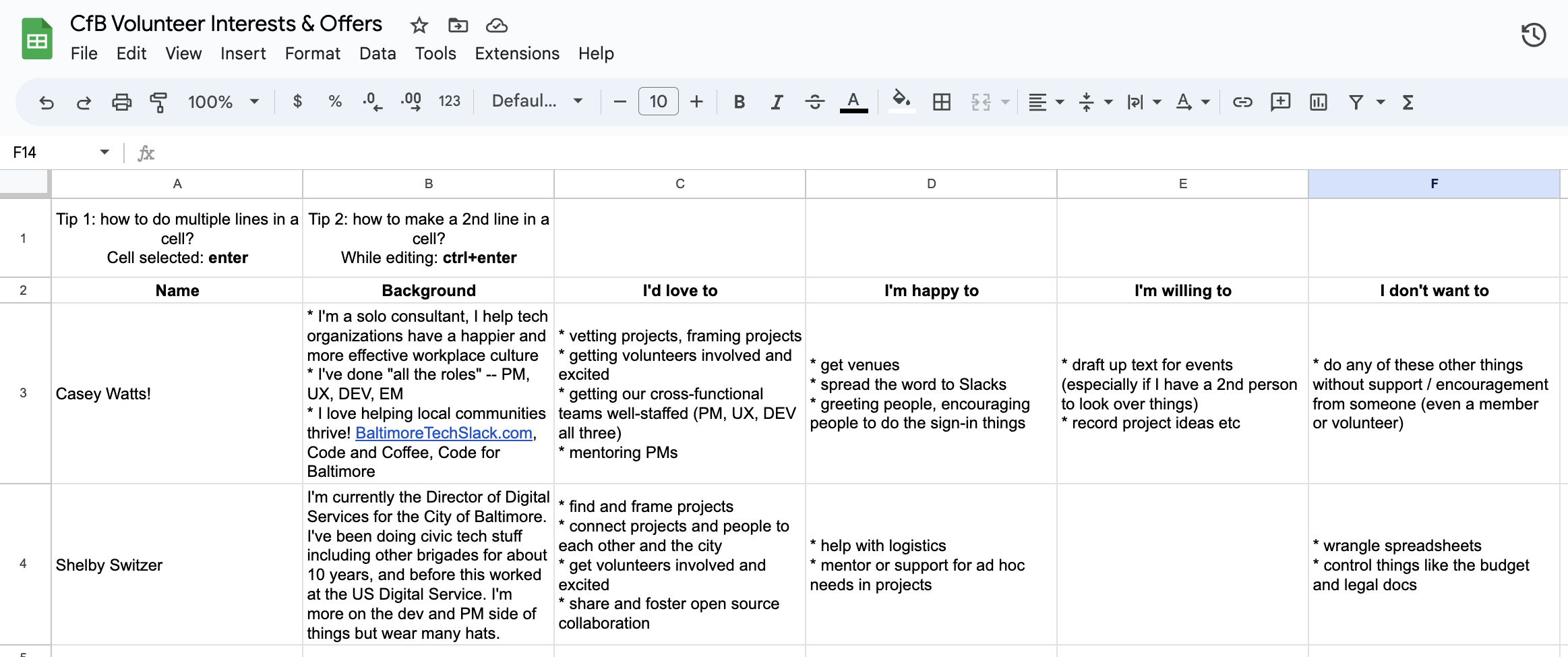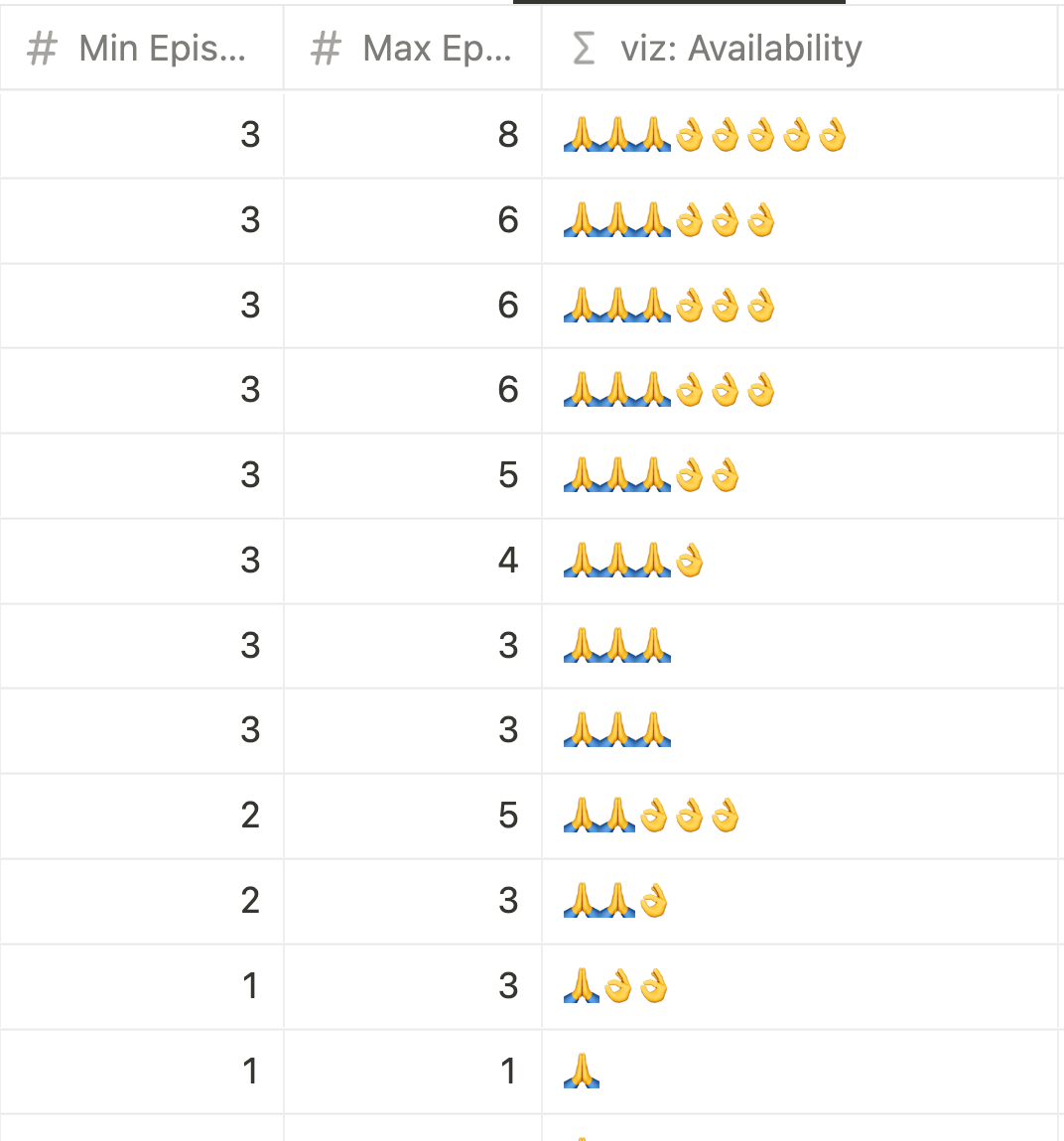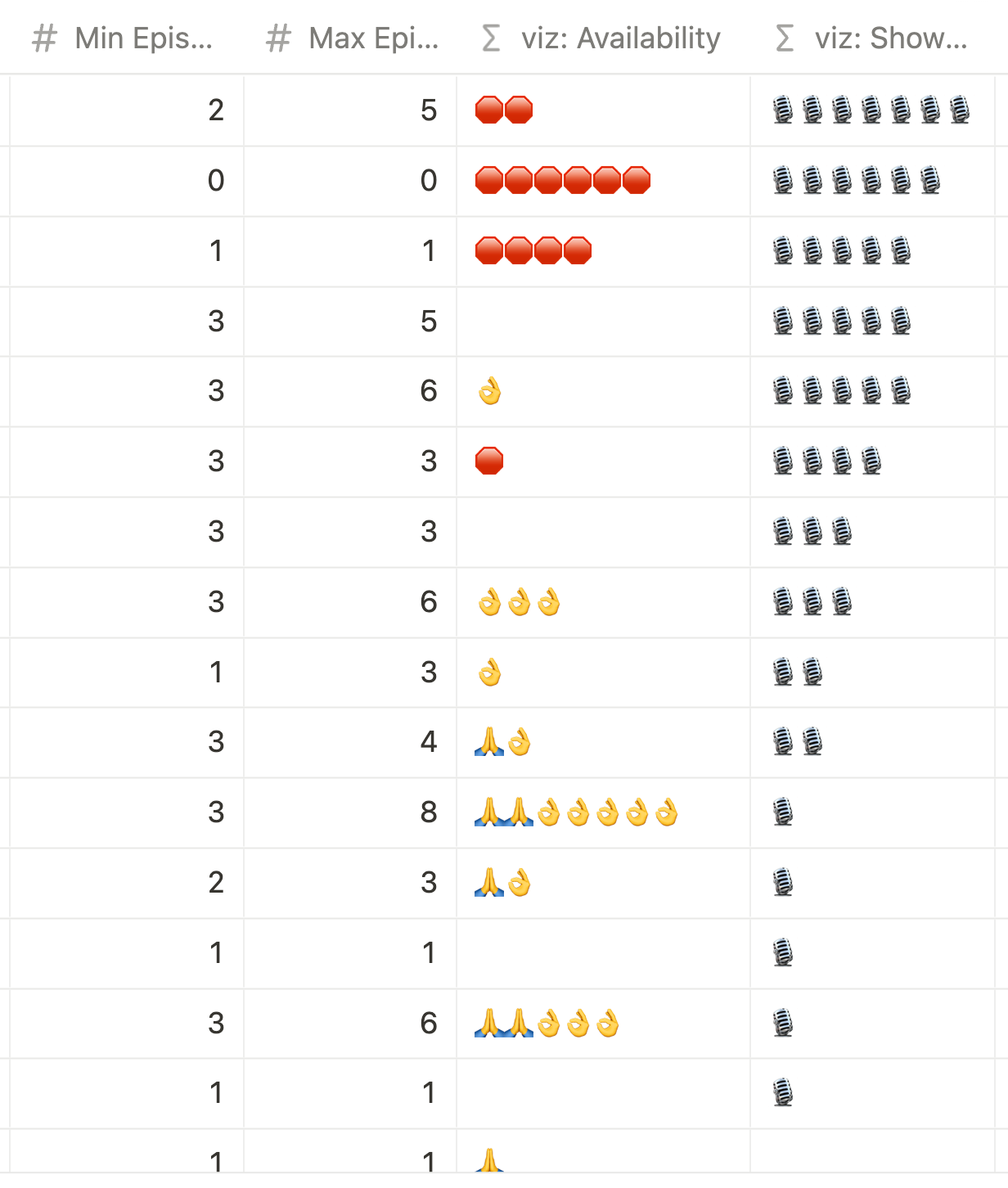Happy Capacity
In This Article
I’ll cover three concepts in this article:
- Happy Capacity — Someone is within their Happy Capacity when they contribute in ways they’re happy with, in an amount of time they’re happy with.
- Happy Contributions — “How would you love to help? Happy to help? Willing to help? Unwilling to help?”
- Happy Time Range — “What’s the maximum time you’d want to spend on this? Minimum?”
Nearing Your Limit
Have you ever heard an organizer say one of these?
I just… really, REALLY wish I had more help. (but in the meantime, I’ll keep doing everything myself!)
It’s not that I don’t have the time to help with this… (but I don’t have time for this)
Don’t get me wrong, I really do want to help! (but I probably won’t end up helping)
These three organizers may not be at their literal capacity limit (work-till-you-drop, time, energy) — but they are at SOME kind of capacity limit.
I call this their “Happy Capacity”. These three are over their Happy Capacity.
What is Happy Capacity?
Someone’s Happy Capacity is how (the ways) and how much (the time) they can contribute, happily. Without feeling frustration, strain or resentment.
This is different from someone’s more literal capacity — literal capacity is someone’s time and energy available to do things in general. Just because someone has some extra time and energy in their week doesn’t mean they want YOU to choose how they spend it!
You can see in the quotes above why it’s important to distinguish Happy Capacity from literal capacity. We need to know when someone is contributing in ways they aren’t happy contributing!
Happy Contributions
What makes someone choose to do one thing over another? Many reasons! Like their interest, their skill, impact, appreciation, learning things, resume building.
Whatever their motivations are, I want to know how each person really wants to help! I ask people:
How would you LOVE to help?
Or even better than that one-line question, you can ask people for more nuance using my Happy Contributions Scale:
In what ways would you:
- …love to help?
- …be happy to help?
- …be willing to help?
- …be unwilling to help?
People love being asked about their preferences! Here’s what one person said:
“I’ve never been asked that before — I’m so glad you asked!! You’re so thoughtful.”
It helps to give some examples! Here’s an example I’ve shared before:
Here are some of mine!
- I’d love to train organizers, supporting them in learning to organize effectively, sustainably, and inclusively.
- I’m happy to find venues for events
- I’m willing to post to social media (but I don’t like to do it)
- I’m unwilling to run an event entirely solo (Usually I can find help! But if I can’t, I’d rather cancel an event.)
Happy Contributions → More Time & Better Work
People are often willing contribute more time when they get to do things they love! People say this correlation is “surprising, but not surprising”. It makes sense once you think about it — but many people wouldn’t have guessed it! (note: obviously some people don’t have this flexibility in their schedule — but many people do!)
It’s definitely true for me! As an example here’s what I’m willing to do for each type of contribution lately:
- Love training organizers: 8h/month
- Happy to get venues: 4h/month
- Willing to do social media: 1h/month
- Unwilling to run an event solo: 0h/month
People also do better work when they are doing things they love. You can trust passionate people more to get something done well. You also don’t have to worry about them following through as often.
Asking About Happy Contributions
I already asked people to help however they want!
It didn’t work.
What’s the secret?
There are a bunch of steps I do to get people to share and discuss this sort of thing.
- First, answer it for yourself
- Figure out what your personal breakdown is for each level (love/happy/willing/unwilling).
- Share your personal examples — that’ll show people what you mean.
- Then, ask other people
- Ask people! Share why this is helpful/important.
- Most people haven’t been asked this before! They’ll have to think about it. They may want to discuss it with you out loud, or they may want time alone to process it.
- (optional) You can share this article with them to explain the idea of “Happy Capacity” you’re shooting for.
- Track what people say
- Simplest: Track these yourself in your personal notes
- Better: Track it in a spreadsheet (filling it out for them; ask before sharing)
- Even better: Ask them to fill it out in the spreadsheet themselves (it’ll be more accurate in their own words AND they’ll feel more ownership)
- Check in periodically.
- Interests change over time!
- Check in every 6 months — 1 year.
Here is an example spreadsheet tracking the Happy Contributions for some Code for Baltimore organizers:

Happy Time Range
We’ve talked about how people want to help — the other component is how much time they want to contribute.
Tracking time is useful for things we do over and over: like running events, or recording podcast episodes, or going to organizer meetings, etc. I want to know HOW MANY of these someone would happily do.
Volunteers often have a Happy Time Range of sessions they can contribute — between their Happy Minimum and their Happy Maximum.
- Happy Minimum = The minimum number I’d be happy to help with (without feeling disengaged, like I’m no longer a contributing volunteer, etc)
- Happy Maximum = The maximum number I’d be happy to help with (without dragging my feet, no longer looking forard to it, starting to resent it, wishing I could do other things)
For example, when I was a co-host of the podcast Greater Than Code, my Happy Time Range was 2-5 episodes per 3 months.
- Happy Minimum = 2 episodes; Less than 2 made me feel like I wasn’t an active member.
- Happy Maximum = 5 episodes; More than 5 made me stressed, and it got in the way of other things I wanted to do.
I got all of the podcast hosts to share their Happy Time Range. Here is a visualization of these (a pictograph!). The praying hands emoji (🙏) represented a minimum, and the okay emoji (👌) represented the remaining capacity up to the max.
This next visualization shows each person’s total Happy Time Range (without showing how much they’ve done lately).

The next pictograph shows each person’s Remaining Capacity — this is the total Happy Time Range minus the number of episodes they’ve done.
- Some people were under-working, below their Happy Minimum (🙏 remaining).
- Some people were happily working, within their Happy Time Range (👌 remaining).
- Some people were over-working, over their Happy Maximum. Each stop sign emoji (🛑) reperesnted one show done OVER their Happy Maximum. Uh oh!

After looking at this chart, it was clear what we should do!! We reached out to the 🙏 and 👌 people to be on more shows, and we tried NOT to have the 🛑 people on shows for a while. Whew!!
Asking About Happy Time Range
How did I get people to share their Happy Time Range with me? I asked something like this:
Hi everyone!
I want to help make sure we’re all contributing an amount we’re happy to contribute — no more, and no less.
How many episodes do you want to be on over the next 3 months, minimum? Maximum?
You could answer this however you think about it (“at least 1/month but no more than 2/month”, or “2-5 over the next 3 months” or “I’d like to do every other week (exactly)” ).
I’ll put it into Notion to make sure we’re all working within our Happy Capacity. Then we’ll know who to prioritize when scheduling, etc!
I asked this in a Slack channel, and half of the hosts answered me directly within a few days. The remaining hosts I messaged privately, and I got answers from them pretty quickly. A couple of people never answered me after several asks, so I put down 0 for them (being entirely unresponsive is one way to communicate availability!).
Homework
I hope you take these ideas back to an organization you’re in!
- Happy Capacity
- Framing The Goal: Tell your group that you are striving to people work within their Happy Capacity.
- Discuss it: Ask people how they think they are doing lately, personally? How about the group overall?
- Happy Contributions
- Come up with and share your own Happy Contributions (love/happy/willing/unwilling).
- Ask your organizers/volunteers what their own Happy Contributions would be (love/happy/willing/unwilling).
- Track these in a spreadsheet, etc.
- Happy Time Range
- Come up with and share your own Happy Time Range (for events, etc).
- Ask your organizers/volunteer to share their own Happy Time Range.
- Track these in a spreadsheet, etc.
